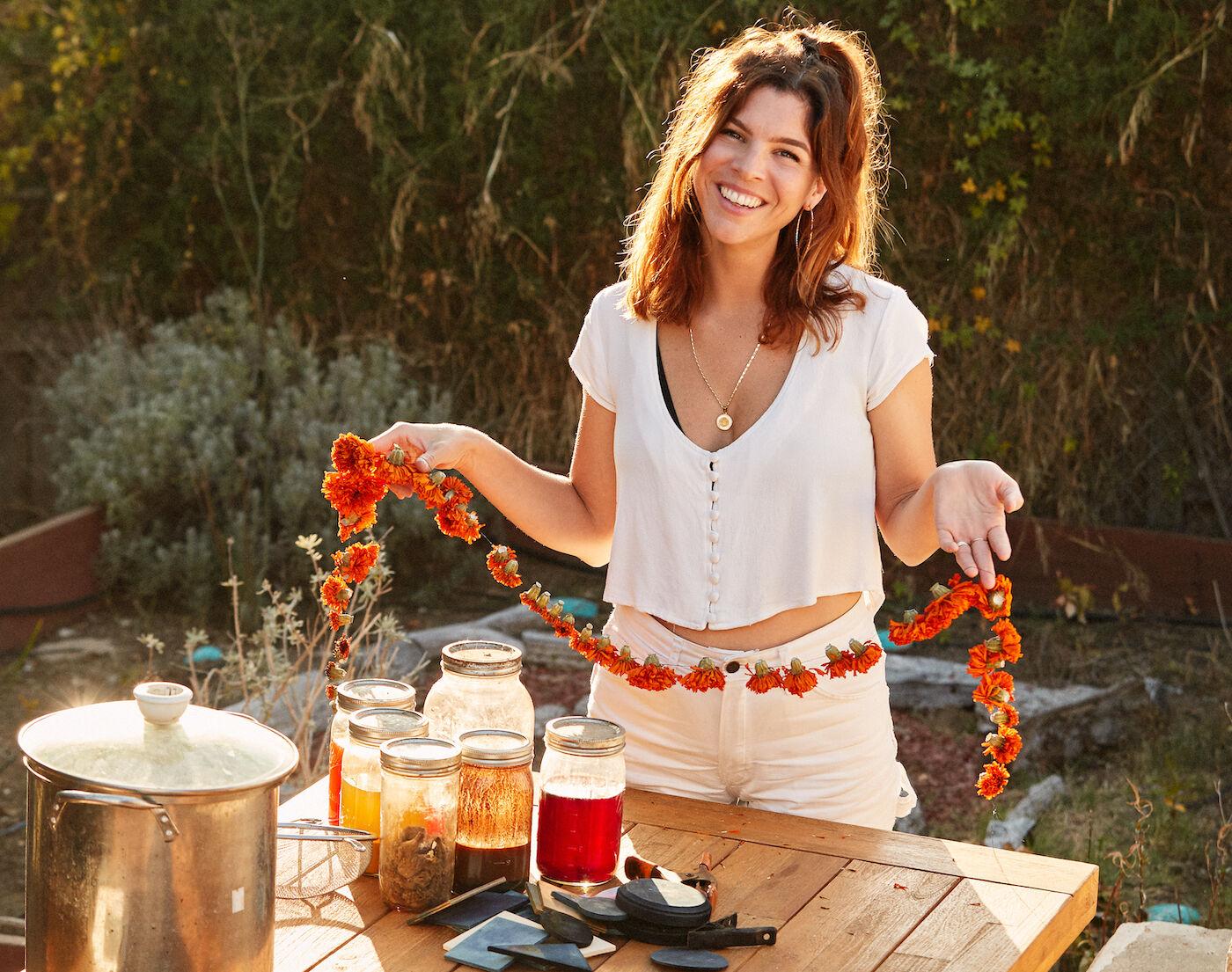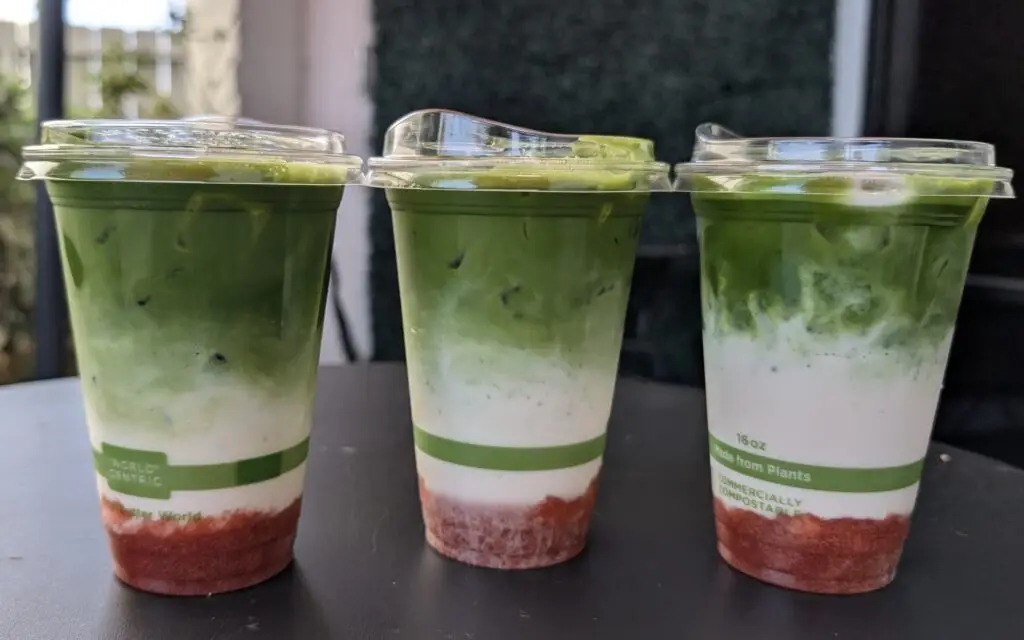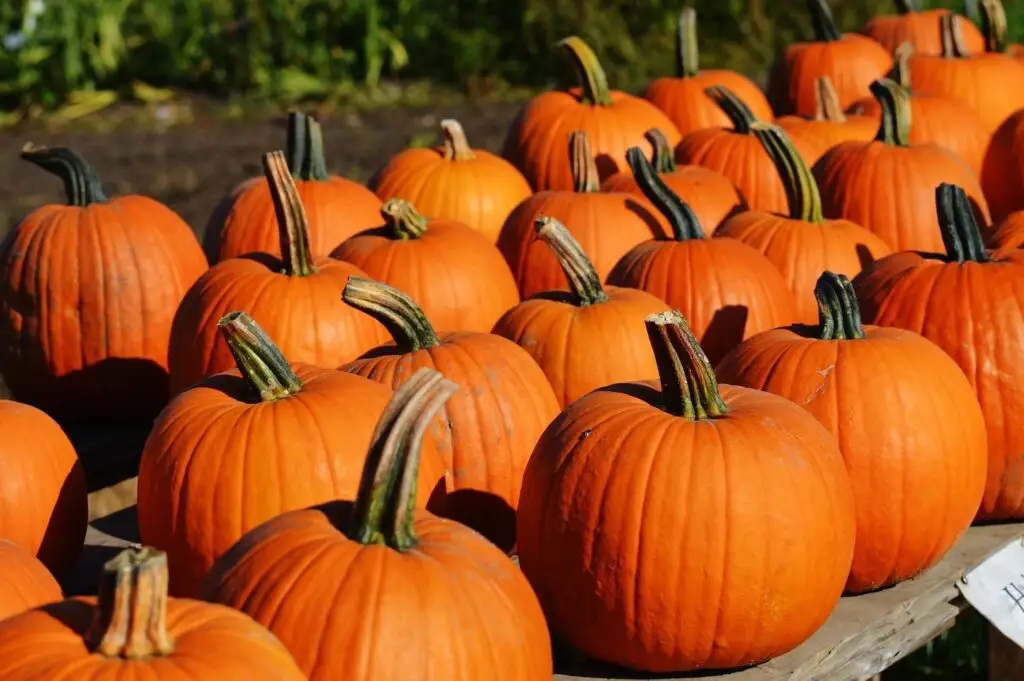Marigolds, eucalyptus, black beans, even cactus fuzz—Aubrey Wood has dyed clothing and other textiles with pretty much anything.
Wood is the owner of Nova Goods, a business built on a sustainable approach to tie-dyeing, which she calls “natural dyeing” since it uses no synthetic ingredients.
“It’s crazy to me we don’t dye more of our clothes,” she says, since all you really need is a pot, a wooden spoon, and a little trash. “I look like a witch with my big pots… You can get a range of colors from any dye. Once you realize that, it opens a whole new world.”
Wood walks us through how to use some entry-level ingredients like avocados and onions to begin your natural dyeing process at home. Grab your cauldron!
1. Collect your materials
A T-shirt or bandanna is a perfect garment for beginners, Wood says: Just make sure they’re made of natural fibers. Grab a large pot, a wooden spoon for stirring, and your natural dyeing elements: washed avocado pits and skins or yellow onion skins (choose one or the other). If you want to create a pattern, grab some rubber bands!
2. Create the dye
Put the ingredients in the pot and fill it about two-thirds full with water (leave room to add your garments later). Boil for a few hours, until you see the liquid has changed color to either a pinkish hue for avocados or a yellow one for onions—onion skins will also be translucent when the dye is ready. Turn off the heat and let the solution sit overnight.
3. Dye your fabric
Strain the dye liquid free of the ingredients. Return the dye to the pot and bring it to a simmer. If you want to create a pattern, now’s the time to fold or scrunch your fabric using rubber bands. Then drench the fabric in running water and squeeze it out so it’s damp. Drop the garment into the simmering dye and let it absorb for a few hours. Turn off the heat and let it cool off entirely.
4. Squeeze, rinse, air dry!
Retrieve your garment, squeeze out all of the dye, and rinse it under cold water. Remove any rubber bands used. You may also want to add some laundry detergent to the rinse for any onion-dyed fabrics, to get rid of the smell. Squeeze out any excess liquid and leave out to air dry. Enjoy your garment and launder it as you would any other clothing.

Aubrey Wood
Nate Hoffman





















